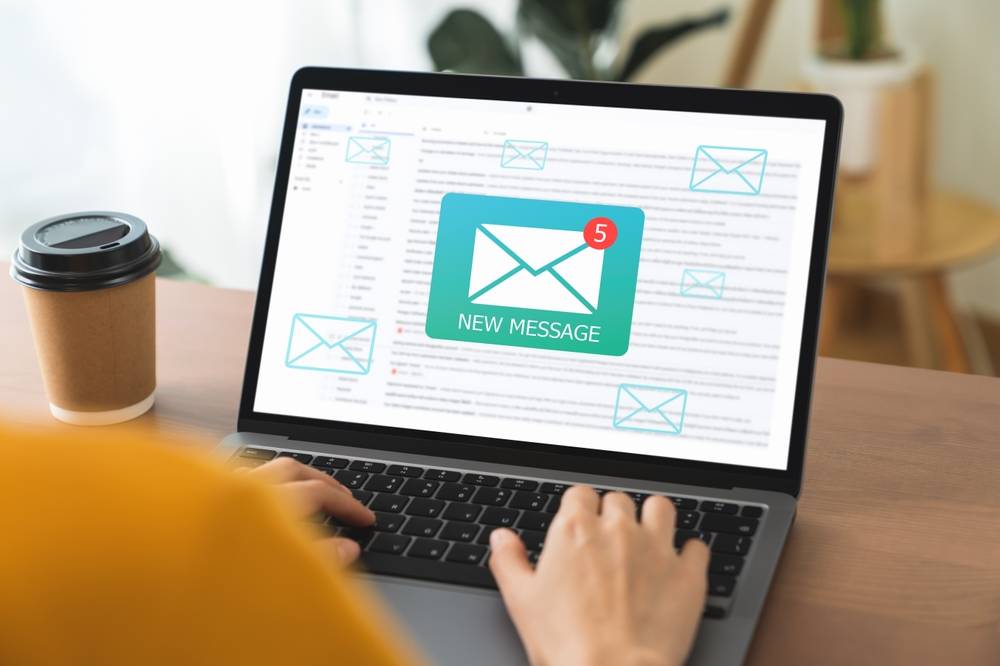Crafting a compelling email marketing campaign that engages customers throughout their buyer’s journey is essential to success. If you’re looking to take your retail marketing strategy to the next level, use these seven steps to ensure that your emails are perfectly tailored to every stage of your retail buyer’s journey. With these steps, you can easily create content that resonates with customers and boosts your ROI.

What Is the Buyer’s Journey?
The buyer’s journey for an email marketing campaign is the process of engaging prospects and customers at each stage of their journey to purchase. It begins with awareness when prospects become aware of a brand or product. This is typically done through email newsletters, blog posts, ads, and other content. As they go through the entire journey, an email marketing campaign that employs the best strategies will start to create new customers and successful conversions.
1. Identify the Different Stages of the Buyer’s Journey
As briefly mentioned, the first stage of the buyer’s journey is awareness. This is when they realize that your business exists. As prospects become more familiar with the product or brand, they move into the consideration stage. During this stage, they research the product, ask questions, and compare it to competitors.
During this stage, they might click on CTAs in your email marketing campaign, send you a message to see what your customer service looks like, and compare your company to similar businesses.
The third stage is intent, when prospects have decided that they are ready to buy. At this point, emails should be tailored to their specific interests and needs. Finally, the last stage is conversion, when prospects complete their purchase. Email marketers should use the buyer’s journey to create a personalized customer experience and guide prospects through the sales process.
2. Understand Your Target Audience
It will be hard for your brand to reach the right people with your email marketing campaigns if you don’t have enough data on who your target customers are in the first place. To start, you must go through your list of subscribers and compile all their data. If necessary, use a data analytics program to help you build a story with the data.
The idea here is to open up all your data and sift through it to find a common theme you can utilize in your email marketing campaigns to reach each subscriber and make them listen. If your subscribers are mainly men aged 20 – 30, and you sell protein shakes, for example, a solid strategy for your email marketing campaign might be to design ads that feature bodybuilders using your product – prompting your target audience to take action.
3. Craft Your Email Content
When making the content for your email marketing campaigns, you want to put forth your best effort. Maybe you don’t want to do just one email and instead hope to create a drip campaign that you can automatically send to new subscribers on your website. Utilizing the data from your audience, create each email to include a new unique detail to build more interest gradually, and always have a quick way for customers to opt-in and take action.
4. Create a Compelling and Relevant Subject Line
The first thing customers see when viewing the content from your email marketing campaigns will be the email’s subject. Make sure that each email subject in your campaign is purposeful and goal-based. Make it easy for a subscriber to want to click on the email. You should make sure that it is a bit clickbaity. Otherwise, it will be easy for them to delete it without ever opening the email.
5. Personalize Your Email
Each email in your email marketing campaign should connect with your customer in a good way. When writing the email, start off by making sure it addresses the subscriber by name. Then, a good strategy is to connect to them emotionally. This is why it is crucial to know who the people you are sending each email to are. Otherwise, you will have difficulty personalizing each email in your marketing campaign to connect directly with the customer.
6. Time Your Emails Right
Timing is crucial in an email marketing campaign. You must ensure that you send emails at a suitable rate, or subscribers will quickly learn to opt-out of your list. After all, nobody likes to have their email inbox cluttered with marketing emails from one particular merchant. Depending on your strategy, make sure you carefully choose the right rate at which you send emails.
Some businesses might notice that they can get away with sending one email a day, whereas others might notice that subscribers tend to opt-out of their list when sending emails at this rate. If you are not working with any data, send one or two emails a week and quickly monitor the results of these emails. If you quickly lose subscribers, it is likely due to poor content that does not connect personally with the reader. After all, you only sent them one or two emails!
7. Measure the Results of Your Emails
As you gain conversions and experience with email campaigns, you will quickly generate content that is proven to convert. From there, you can quickly start to better gauge how many emails you need to send each week. In addition, it will provide you with priceless data that you can use to improve your campaigns going forward.
Testing your email marketing campaigns is key to understanding your target audience. This will help you learn from your mistakes and become better at email marketing. There are many strategies for testing the results of your emails. A/B testing allows you to test different elements of your campaigns and analyze the results to determine which are most effective.

Get Started Crafting the Perfect Emails for Your Buyers Today!
If you want to make an email marketing campaign that will generate more sales for your brand, the best thing you can do is understand who the buyers and audience members are. Then, choosing the right email strategy and creating content that prompts customers to take action will be a lot easier. If your recent emails are not converting into sales at the rates you were hoping for, don’t get too down on yourself. With a little practice, you will soon improve your conversion rates and get more sales for your company.
For more information, please refer to the following pages:
- What would be the best marketing plan for a clothing store?
- What Would Be the Best Marketing Plan for a Luxury Store?
- What Would Be the Best Marketing Plan in Food Sector?
- What Would Be the Best Marketing Plan for a Restaurant?
- Retail Marketing Strategy: 15 Ways to Boost Your Sales
- Why Is a Marketing Strategy Important in Retail?
- What Is the Best Marketing Strategy for a Retail Product?
- Retail Marketing Strategy Examples
- Why Google Ads Is Important in Retail Business
- Why a Blog Is Still a Nice Marketing Strategy in Retail
- What Are the 7 P’s of Retail Marketing?
- Is Customer-Centric Marketing the Best for Online Retailers?
- How Can a Local Retailer Use Social Media Marketing?
